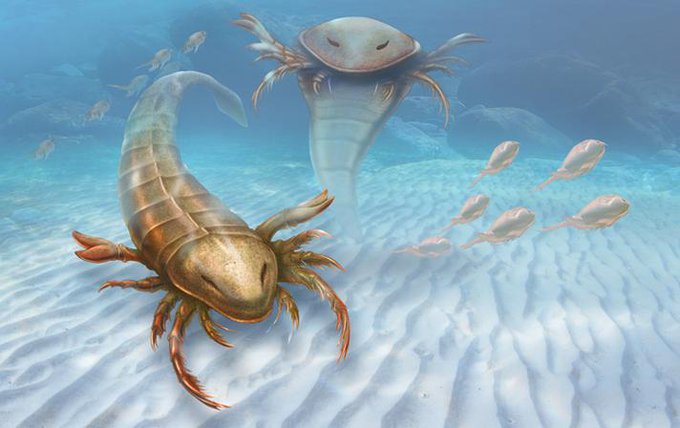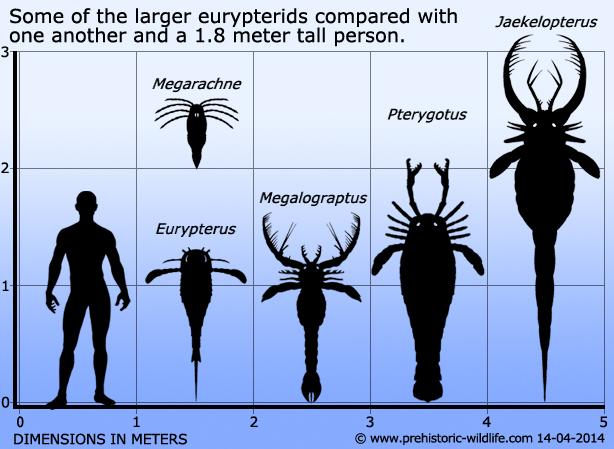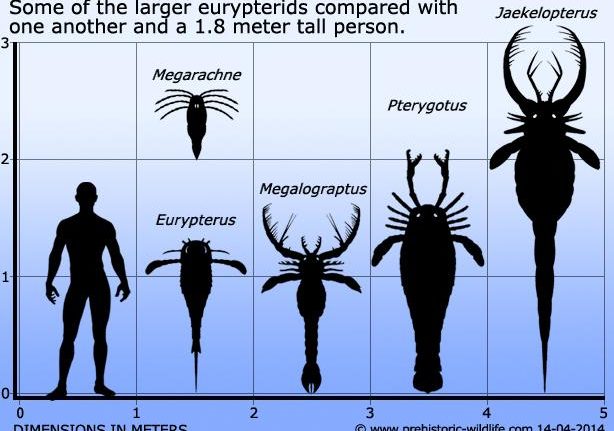The ocean is home to a wide variety of unique species, and many resemble something out of a science fiction story. The creatures that roam the seas today pale in comparison to those that called the ocean home millions of years ago.

A representation of the giant sea scorpions.
One of the most fearsome prehistoric predators was the ‘Eurypterida’, part of the ‘Paleozoic arthropods’ family, or giant sea scorpions.
Giant sea scorpions are believed to have lived during the Paleozoic Era, about 542 to 251 million years ago. However, the Paleozoic Era came to an end in what scientists call ‘The Great Dying’, an event which wiped out 95% of all living things.
At the time of their existence, Eurypterida were believed to be the largest animals in the ocean, according to the Daily Star. In fact, one species, the ‘Jaekelopterus rhenaniae’ is believed to have grown to more than 2.5m in length.

Image credit: Twitter/@echinoblog
Not only were these animals colossal in size, according to a new paper published in Science Direct, they were likely agile swimmers, using their large front armed with claws to grab their prey, which they would then crush between the teeth-like structures on their back sides.
What exactly these creatures ate still remains a mystery. Researchers have suggested their diet could have consisted of two very different meals. Some believe they feasted on large amounts of very small creatures, similar to how modern day whales eat. Other researchers believe its more likely that they sourced their meals from larger soft-bodied animal.
The first known documented specimen was discovered in Melbourne in 1899, and consisted of a fragmented exoskeleton.
Image credit: Twitter/@ForbesScience



















